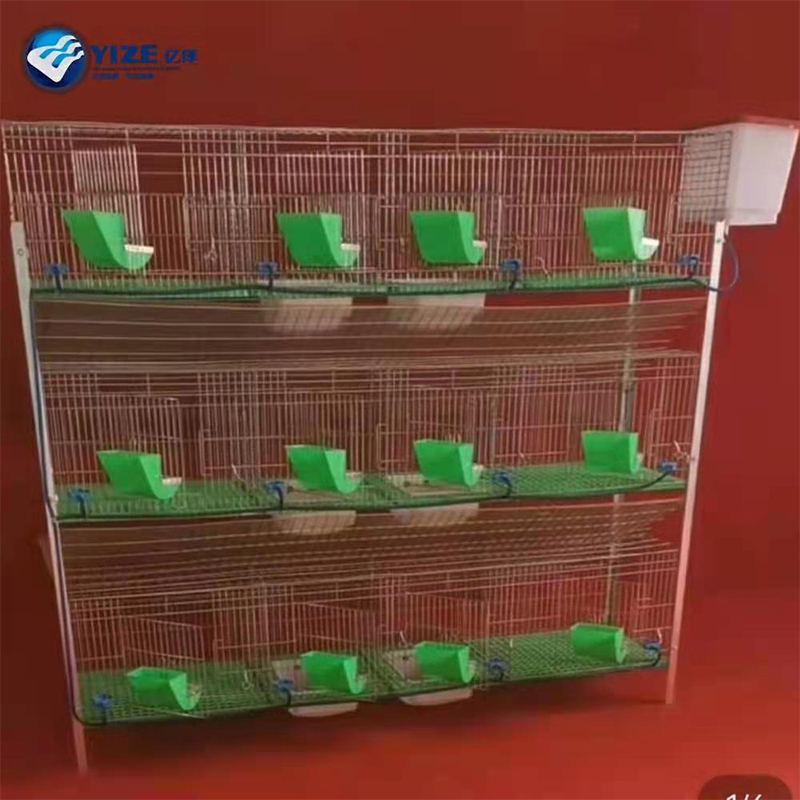automatic layer chicken cage
Nov . 14, 2024 12:19 Back to list
automatic layer chicken cage
The Rise of Automatic Layer Chicken Cages Revolutionizing Poultry Farming
Poultry farming has undergone significant transformations over the years, and one innovation that stands out is the introduction of automatic layer chicken cages. These systems are designed to enhance productivity, improve animal welfare, and streamline the overall management of chicken farms. As the world continues to demand increased efficiency in food production, automatic layer cages represent a pivotal evolution in the poultry industry.
Automatic layer chicken cages are engineered to house hens in a compact yet comfortable environment, allowing for the efficient collection of eggs while minimizing human intervention. These cages are typically constructed from high-quality materials that ensure durability and biosecurity, creating a safe space for the birds. The cages are arranged in multi-tier systems, which maximize the use of vertical space, allowing farmers to rear more birds without expanding their physical footprint.
One of the primary advantages of automatic layer chicken cages is the enhanced automation in various stages of production. Egg collection, for instance, is made simpler and quicker with systems that transport eggs directly from the cages to designated collection areas. This automation reduces the risk of mishandling or damage, ensuring that farmers can deliver high-quality eggs to their customers efficiently. Additionally, automatic feeding and watering systems can maintain optimal conditions for the hens, reducing labor costs and the time spent on daily farm operations.
automatic layer chicken cage

The health and welfare of the hens are also significantly improved in automatic layer chicken cages. These systems are designed to provide optimal living conditions, including light control, temperature regulation, and ventilation. Proper management of these factors reduces stress on the birds, which can result in higher egg production rates and better overall health. Moreover, the cages are often equipped with features that allow for easy access to the hens for monitoring and veterinary care, ensuring that any health issues can be promptly addressed.
From an economic perspective, automatic layer chicken cages present many advantages. By increasing efficiency and productivity, farmers can achieve higher output with lower costs. The ability to rear more birds in a smaller space leads to economies of scale, which can significantly enhance profit margins. Furthermore, with the rising cost of labor, automating processes can help mitigate the impact of labor shortages and rising wages in the agricultural sector.
Despite the numerous benefits, the adoption of automatic layer chicken cages is not without criticism. Animal welfare advocates often raise concerns about the ethical implications of housing hens in cages, regardless of automation. They argue that free-range systems provide a better quality of life for the birds. As a result, many farmers are now exploring hybrid models that combine the efficiencies of automated systems with welfare-friendly practices.
In conclusion, automatic layer chicken cages signify a remarkable advancement in poultry farming, combining automation with efficiency to meet the growing demands of the global food supply. While there may be ethical considerations to address, the advantages of improved production, reduced labor costs, and better health management for the hens make these systems an appealing choice for many farmers. As technology continues to evolve, it holds the promise of creating even more innovative solutions for the poultry industry, fostering sustainable practices while ensuring food security.
-
Hot Sale 24 & 18 Door Rabbit Cages - Premium Breeding Solutions
NewsJul.25,2025
-
Automatic Feeding Line System Pan Feeder Nipple Drinker - Anping County Yize Metal Products Co., Ltd.
NewsJul.21,2025
-
Automatic Feeding Line System Pan Feeder Nipple Drinker - Anping County Yize Metal Products Co., Ltd.
NewsJul.21,2025
-
Automatic Feeding Line System - Anping Yize | Precision & Nipple
NewsJul.21,2025
-
Automatic Feeding Line System - Anping Yize | Precision & Nipple
NewsJul.21,2025
-
Automatic Feeding Line System-Anping County Yize Metal Products Co., Ltd.|Efficient Feed Distribution&Customized Animal Farming Solutions
NewsJul.21,2025






